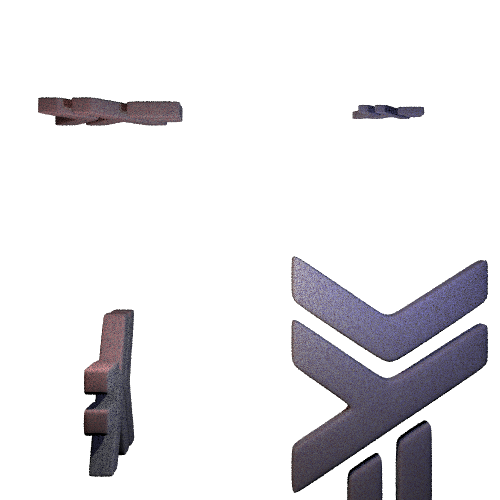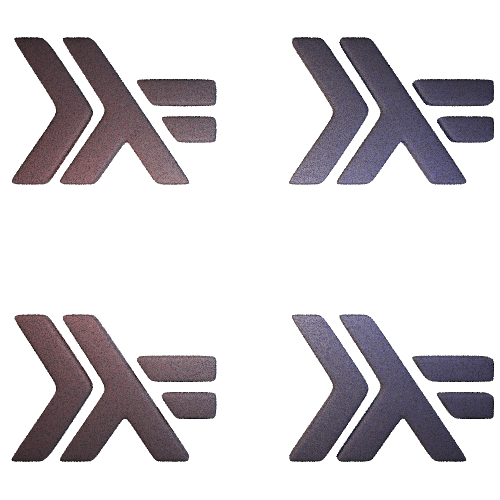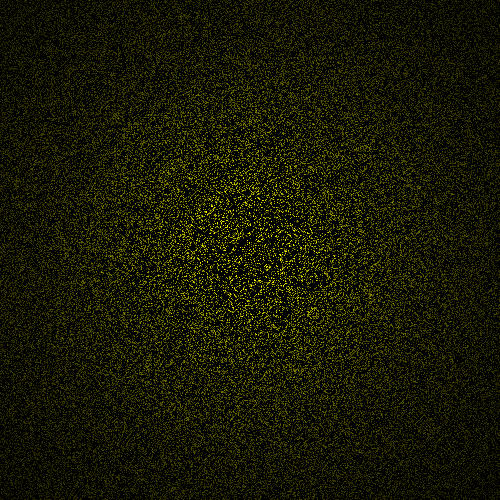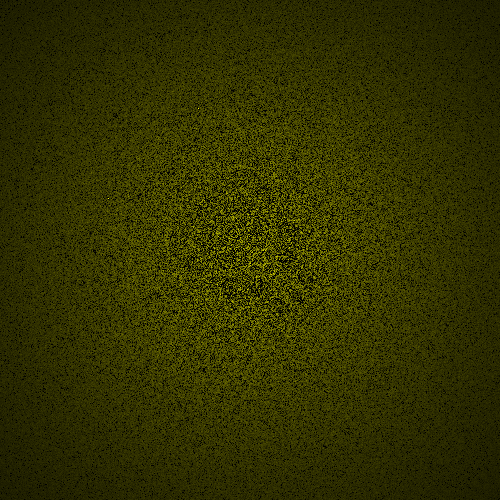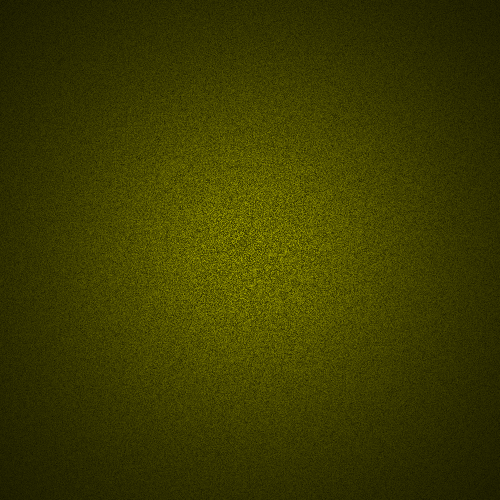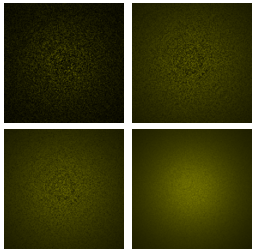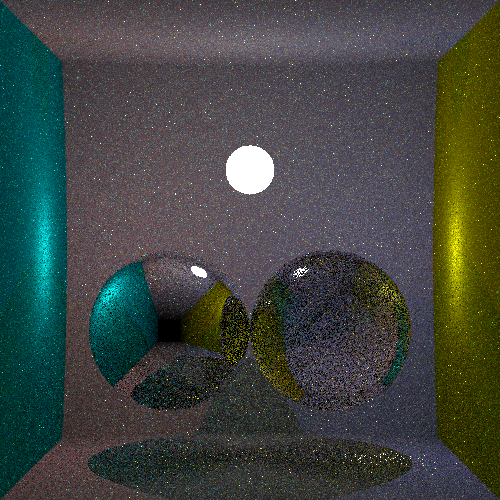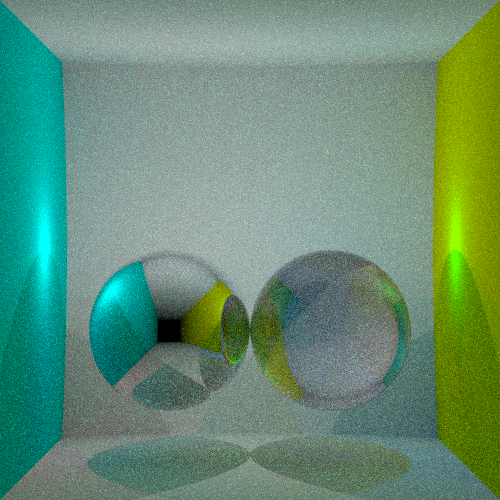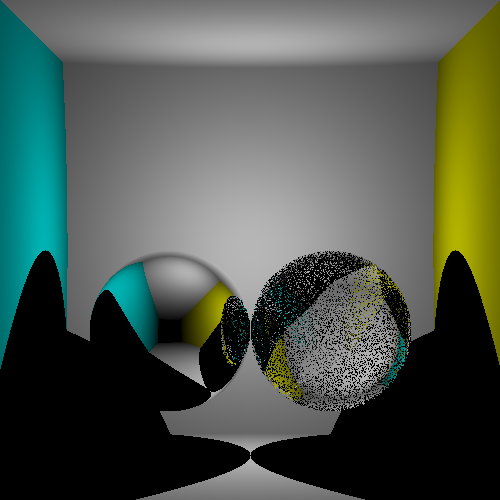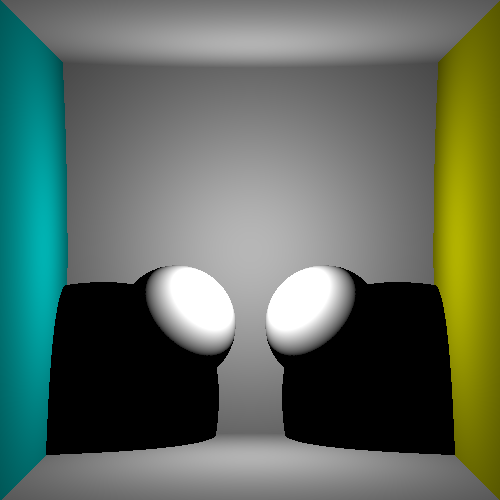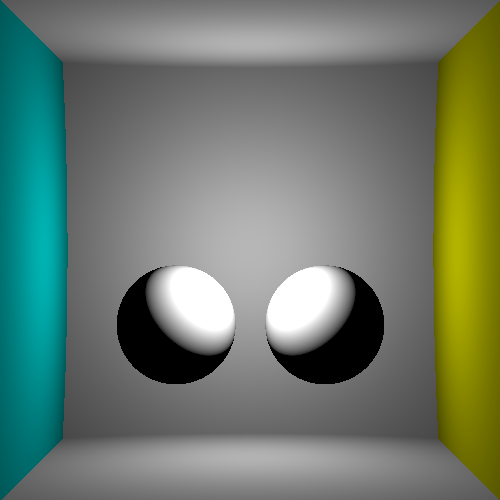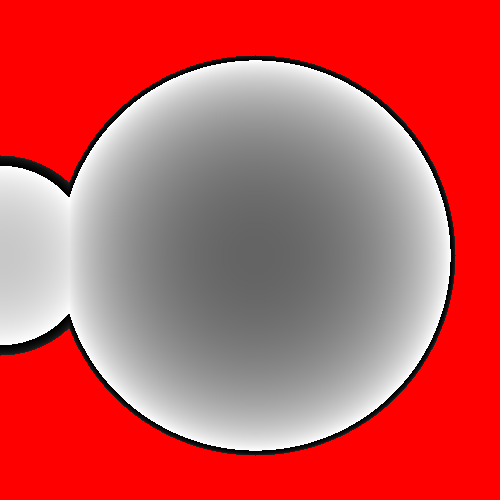StreamRay is a raytracing engine written live on twitch.
You can follow it on https://www.twitch.tv/FlyingGuibou
Stream will be copied to Youtube regularly.
Stream #11
Generic transformations using homogeneous coordinates and matrices.
Stream #10
We extended the scenegraph in order to introduce transformation (translation) of scene graph item. In order to do that, we do had to also take the translation of bounding boxes and ray into account when computing intersection. This gives us the possibility to reuse the same asset, without pre transforming it (so without duplication).
We improved the sampling strategy for sphere light by only sampling the visible spherical cap on the sphere light. The result is show in this image where the grid shows different way of sampling the sphere light, from left to right, top to bottom:
- Sampling a random point of the sphere light
- Sampling a random point on the hemisphere facing the point behind lit
- Sampling a random point on the hemisphere facing the point being lit and proportional to cosinus weighted solid angle.
- Sampling a random point on the spherical cap facing the point being lit and proportional to cosinus weighted solid angle.
With 10 samples per pixel, we observe that the latest strategy is the most efficient. This strategy does not generates samples which are occluded by the sphere itself by sampling in the visible spherical cap and does also prioritize points which maximises the cosinus term.
Stream #9
We worked on performance of the BHV implementation, with the following highlights:
- Early exit in the visibility test
- We do not go inside a
BVHBoxif we did already find an intersection which is closer than the entry of the box. - We go inside
BVHBoxin ray order.
Stream #8
Support for a high number of primitives (still spheres).
We added a Box primitive, as well as a BHV object, which split the scene in
a tree. Walking this tree is more efficient than a linear search for
intersection.
This approach proved its benefits, but we really need to improve the implementation efficiency during next stream.
This scene, composed of 9261 spheres is rendered in 20s. In comparison, a scene with 25 spheres was rendered in 10s without the acceleration structure.
Stream #7
- We worked a bit on performance again, reduced the random generator overhead by threading the random generator through the function calls. This removes the concurrent access on the global RNG which is sync and hence slow.
- We added
asyncand multi core rendering. - We extended the
Lightdata type to include sphere light, which are now extracted from the sphere objects with an emission behavior.
Stream #6
We mostly did optimisation which cut the rendering time from 27s to 4s. Using profiling we where able to locate and fix the following performances probleme:
- The
randomlibrary is slow. We upgraded to random 1.2.0 for a huge performance boost. - Using
linearV3leads to packed data (because it is polymorphic). We replaced it by our own implementation which correctly unpack. - A few
INLINEimproved the allocations. - Rewriting
rayIntersectObjectsfrom a series ofmapandmaximumto afoldl'gives a huge performance boost.
We also refactored the direct lighting and introduced a Scene and Light
datastructure, in order to handle multiples lights. Light selection is done
randomly, a light is picked uniformly. This leads to introduced noise.
The following image is generated with 200 samples per pixel in ~150s on my laptop
Stream #5
- We introduced pixel filtering (with a box filter) in order to get anti aliasing.
- Indirect lighting for diffuses surfaces using cosinus weighted importance sampling.
- Russian rulette for earlier termination of the render.
The following images are computed with different maximum depth.
Stream #4
We added reflect and refract function in order to handle mirror and glass
material.
Glass are not trivial because they involves the combination of both behaviors. During the stream we first decided to trace both the reflected and refracted rays, which was super slow.
Instead we used sampling by randomly picking one or the other and weighting it with the probability density. We then decided to use multiple importance sampling in order to reduce the noise.
Stream #3
In this short stream, we added shadows by tracing a ray toward the light and check if there is any object in the path. We observed that it was leading to noise on the surface because the point on the surface may sometime be under the surfaces. We addressed this issue by slightly moving the ray origin toward the light source, in order to exit the current object.
Stream #2
In this 1:30 stream, we were able to make many changes.
- We fixed the black ring bug around spheres and introduced a
tonemapfunction, responsible to scale float measurements to screen value. - We extended the scene so it looks like a cornel box, with walls defined using big spheres
- We introduced a
Materialtype, now associated with theSphereusing theObjecttype. - We introduced a lighting model for the material, taking into account a light position, the distance to the light, the angle between the ligth direction and the surface normal.
- We extended the camera model to a perspective, using a secondary bigger projection plane.
- Basic gamma correction.
Stream #1
This is the first stream, we computed a depth buffer of a scene composed of many (2) spheres.
